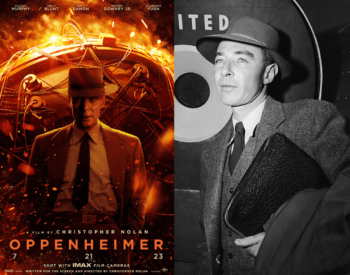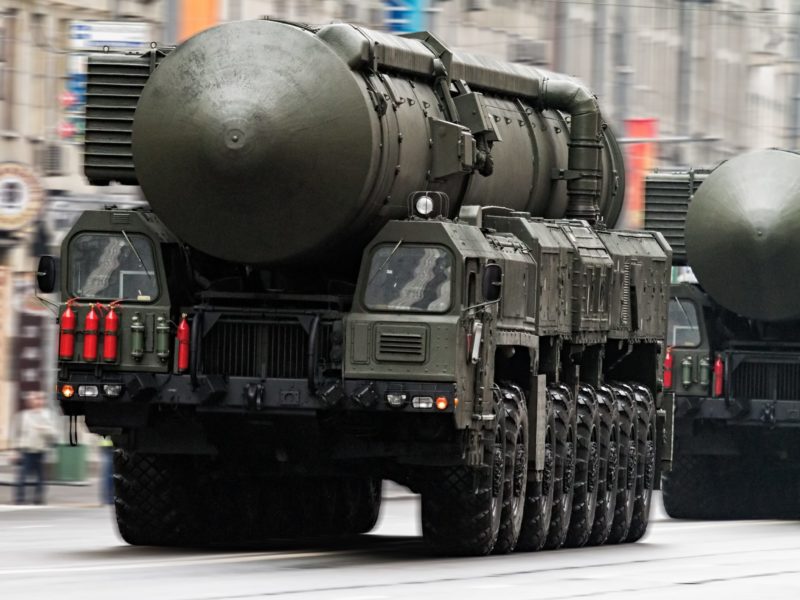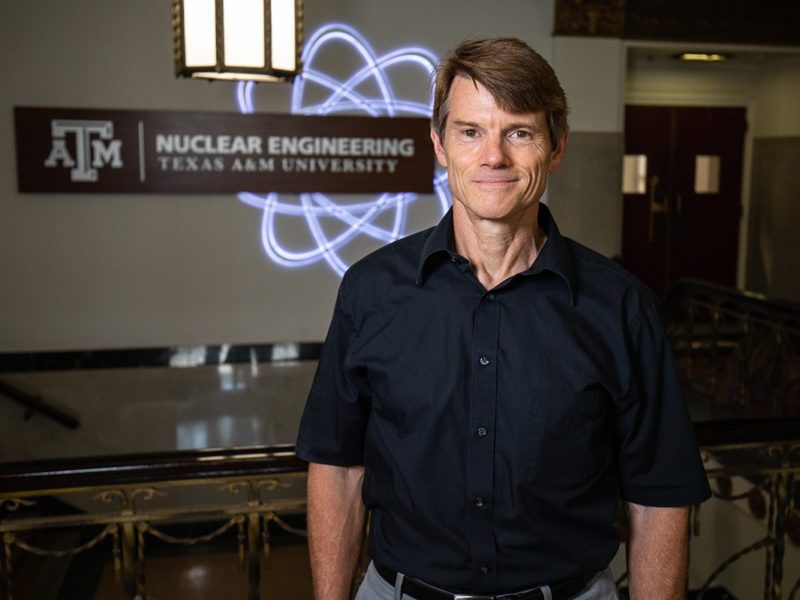Who Was Robert Oppenheimer? A Texas A&M Nuclear Policy Expert Explains The Physicist’s Complex Legacy

Seventy-eight years ago this month, the world entered the atomic era when a group of scientists led by physicist J. Robert Oppenheimer detonated the first-ever nuclear weapon at the Trinity test site in central New Mexico.
This weekend, moviegoers across the country will witness a dramatized version of these events as Christopher Nolan’s “Oppenheimer” hits theaters. The new film promises to explore the complex life and legacy of the titular physicist and “father of the atomic bomb,” played by Cillian Murphy.
But how much is fact and how much is fiction? To learn more about Oppenheimer and the bomb that changed the world, Texas A&M Today spoke with Dr. Matthew Fuhrmann, a nuclear security expert and professor of political science at Texas A&M University’s Bush School of Government and Public Service.
Who was J. Robert Oppenheimer, and what role did he play in the development of the first nuclear weapons?
Every country that has developed nuclear weapons — 10 in total — had a so-called “father” of their bomb. For the United States, that person is Oppenheimer. He headed up Los Alamos National Laboratory during World War II. This is where the world’s first nuclear bombs were assembled. It is important to remember, however, that nuclear programs are large-scale projects that require a collaborative effort between many scientists and politicians. Although a single person often gets the credit in national narratives, these programs are a team effort.
How did the invention of the atomic bomb change the way we think about national security and foreign policy?
Nuclear weapons were a game changer for international relations and national security. The strategist Bernard Brodie exemplified this when he said after learning of the U.S. nuclear bombing of Hiroshima in August 1945, “Everything that I have written is obsolete.” Nuclear weapons are so much more destructive than the most powerful conventional weapons. Given the sheer destructive potential of nuclear forces, war with a nuclear-armed country became almost unthinkable. Many people believe that the prospect of nuclear destruction prevented the cold war between the United States and the Soviet Union from becoming hot.
What are some differences between the nuclear weapons Oppenheimer helped develop, and the kinds of weapons that make up a modern nuclear arsenal?
The first nuclear weapons developed during World War II were fission bombs. These weapons, despite being incredibly destructive, are less powerful than the forces that followed. In 1952, the United States tested its first thermonuclear weapon — a bomb with substantially more destructive power. Thermonuclear weapons use fission to trigger a fusion process, resulting in the release of massive amounts of energy.
The detonation above New York City of the B83, the largest thermonuclear weapon currently in the U.S. arsenal, could kill an estimated 1.8 million people, according to the simulator NUKEMAP. To put this in perspective, the estimated number of fatalities for a bomb the size of the one the U.S. dropped on Hiroshima is 264,000 — still a horrifying number, but fewer than what a thermonuclear weapon could inflict.
Modern nuclear powers usually possess a range of capabilities, ranging from low-yield nuclear weapons meant for use on the battlefield to massive thermonuclear weapons that could obliterate cities.
How did these later developments change the nuclear policy landscape, and what do modern nuclear security efforts look like?
Modern nuclear security efforts are focused on limiting the international spread of nuclear weapons. After the U.S. use of nuclear weapons in World War II, fears that there could soon be dozens of nuclear armed states permeated world politics. Remarkably, however, just 10 countries built nuclear weapons over the last 78 years, and nine possess them today (South Africa dismantled its small nuclear arsenal in the early 1990s).
The slow pace of nuclear weapons proliferation is due in large part to efforts by the United States and others to stop the bomb’s spread. Today, the United States continues to oppose the international spread of nuclear weapons, even to allies. It does so by supporting multilateral nonproliferation treaties — most notably the 1968 Nonproliferation Treaty, which prohibits most countries from possessing nuclear weapons — and bilateral measures such as economic sanctions and security assistance. These efforts have been largely successful; in the last 25 years, only one new country (North Korea) has joined the “club” of nuclear weapons states.
Within this modern context, how would you describe Oppenheimer’s overall legacy?
It’s complicated. Oppenheimer will forever be associated with the creation of nuclear weapons — a military technology with a complex legacy. There is evidence (including from my own research) that nuclear weapons have made the world more peaceful by making war prohibitively costly. Yet there is a downside too: we are now forced to live in a world where a single accident or miscalculation could have catastrophic consequences for the entire globe.
Media contact: Robyn Small, Bush School of Government and Public Service, rsmall@tamu.edu





